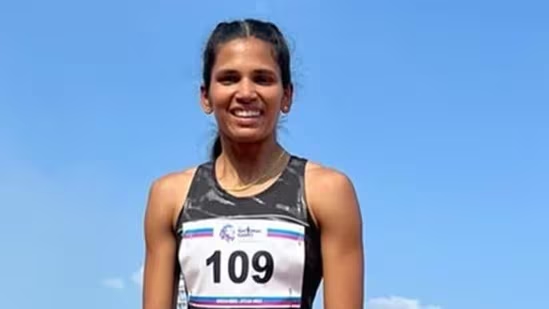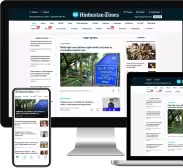Hurdler Jyothi Yarraji counts her gains after her first sub-13 run
This has been a great year for Jyothi Yarraji. Her winning 100m hurdles time of 13.09 seconds at the Federation Cup earlier this year was not ratified as a national record as it was wind-assisted. But she went on a record-breaking spree in the European circuit, more than making up for that disappointment. In a 16-day spell starting May 10, she first broke Anuradha Biswal's 20-year national record of 13.38secs then improved her own mark thrice. Her national record now stands at 13.04 secs.  PREMIUM
PREMIUM
Expectations were high that Jyothi would perhaps run faster than her national mark at the National Games and sign off her season on a high. The 23-year-old followed a bonus 100m gold with a stunning 12.79 secs in the hurdles. The brilliant effort though wasn't ratified due to a tailwind of 2.5m/secs—the permissible level is 2m/secs.
“The hurdles result has given me a lot of confidence despite it being wind-assisted. I am very happy with my speed, movement and recovery,” the 23-year-old said.
“I am glad I am still holding the national record. I know people expected me to break it with a sub-13secs time, but more than any specific timing my goal has always been to improve.”
Having knocked at the sub 13-second barrier twice, Jyothi was always aware of expectations. Before the National Games—it ended on Wednesday—she had dwelled on the need to stay in the present.
“It (sub-13) will happen for sure, but I can’t predict when. All I can do is work hard and run fast,” she had said.
Boring as it may sound it is the approach Jyothi and her British coach James Hillier swear by. A former hurdler, Hillier has been training Jyothi at the Odisha Reliance Foundation High Performance Centre for close to three years now and his efforts are beginning to bear fruit.
Jyothi went from 13.91 seconds in 2019 to 13.03 secs in a year though it wasn't ratified as a national record as there were no National Anti-Doping Agency (NADA) testers present, neither was an AFI technical delegate present as required. And then a back injury forced her to miss out the 2021 season.
“It has been a great season. It’s been quite long but I believe she has the legs to do well at the Open Nationals that are scheduled after the National Games,” Hillier, who heads the athletics programme at the Reliance academy, said.
Calling Jyothi's European tour this summer a “life-changing experience” for her, Hillier said: “Just watching her grow as a person and an athlete this year has been amazing. Training with foreign athletes, experiencing European food, competing with European girls, and being competitive with them has really given her the foundation to kick on.”
The focus now is to be consistent and chip away on her own national mark. It is an incremental process, Hillier said. “You have to be patient. It’s all periodic—periodic loading, periodic gains. My sole target is to make little improvements in each session.”
Her below-par performance at the Commonwealth Games, where she failed to make it to the final, drew a closer scrutiny of her technique. The areas of improvement are plenty. Some are beyond Jyothi’s control, like her long limbs. Muscular imbalance, a common condition among athletes, and hurdlers in particular, is another. The idea, Hillier said, is to get her “snappier” and add speed to her natural rhythm.
Jyothi's long legs guarantee longer strides, but long levers move slower. Since the hurdles in the women's event stand 2 ft 9 in (83.8 cm), lower than the hip level of most athletes, speed is of vital importance. Hillier is working to add that to Jyothi's “lovely natural athletic rhythm”.
“Faster girls are a lot snappier and that’s what I want her to be, particularly with her trailing leg. Her approach to the hurdles can also be a lot snappier. These adjustments take a lot of time to perfect. She is on the fringes of being world-class, but there's work to be done.”
To address muscle imbalance, Jyothi undergoes strength tests every month and inter- and intra-muscular data are compared to fix the training plan.
“There is a direct correlation between muscle imbalances and injuries. Jyothi's right leg muscles were found to be a lot stronger than her left. We have put her through a specialised regimen to address the issue. These exercises target the posterior chain which includes the hamstring and glutes,” he said.
Success on the track apart, Jyothi is driven by the desire to lift her family from poverty. Her father is a security guard and mother is a domestic help. “I want to give back to my parents. I don't want my next generation to suffer,” she said.
Experience unrestricted digital access with HT Premium
Explore amazing offers on HT + Economist Start 14 Days Free Trial Already Subscribed? Sign In
Disclaimer: The copyright of this article belongs to the original author. Reposting this article is solely for the purpose of information dissemination and does not constitute any investment advice. If there is any infringement, please contact us immediately. We will make corrections or deletions as necessary. Thank you.







